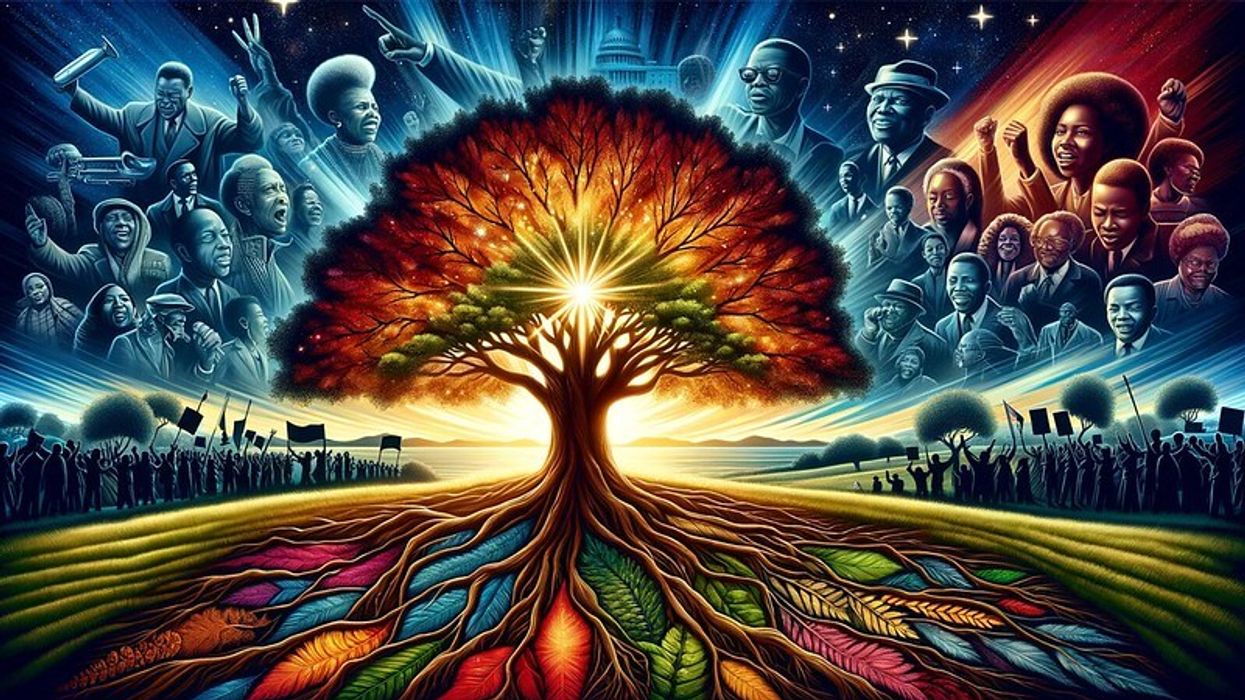21 Frederick Douglass Facts: Curious History Facts For Kids!

This article is about one of the most famous abolitionists in the history of the United States, Frederick Douglass.
Frederick Douglass, who was named Frederick Augustus Washington Bailey at birth, was born in Talbot county, Maryland. Frederick Douglass is a very crucial historical figure who shaped the history of the black community in the United States.
He was a social reformer, an outstanding orator and a writer, and a statesman as well.
Although the exact date of birth of Frederick Douglass was not recorded at the time, it is believed that it fell on February 14, 1817 mainly because of the fact that his mother used to call him ‘little valentine.’ During his lifetime, Douglass gave several notable speeches and wrote three autobiographies, which explained in detail his life as a slave and how he was oppressed during most of his childhood and youth.
But he rose to the highest levels of American society even from his abusive beginnings and grew up to be an influencer and a voice of hope for many enslaved black Americans.
Frederick Douglass was the first African American to be nominated as a vice president of the United States, as the running mate on the Equal Rights Party ticket.
He was always a believer that dialogue had the power to make alliances and create a balance between the racial and ideological disparity which seemed to dominate the American society in the 19th century.
Frederick Douglass is still remembered by American citizens for his strong ideals and dedication to making the country a place which treats each of its citizens equally, without racial barriers.
Surprisingly, he is also known for being the most photographed American man of the 19th century!
He derived his surname Douglass from a Sir Walter Scott poem. His second marriage to Helen Pitts Douglass created a lot of controversies as she was 20 years younger than he was but they had support from her sister Eva Pitts.
She was the daughter of Gideon Pitts Jr. His autobiography 'Narrative of the Life of Frederick Douglass, an American Slave' was extremely popular.
After reading about his work, life, and marriage to Helen Pitts, also check out Cuba culture facts and a red giant.
Frederick Douglass Life History
Frederick Augustus Washington Bailey was born into slavery on the Chesapeake Bay in Talbot County, Maryland. There was no authentic record of his birth, but Douglass believed that it fell on February 14, as his mother called him ‘little Valentine’.
From a very early age, he was separated from his mother and sent to his grandmother who raised other slave children just like him. Douglass mentions in his autobiography that he met his mother only occasionally before she passed away when young Douglass was only seven years of age.
It is believed that Frederick Douglass was of mixed race, his mother being native American and African, as well as European.
When Frederick Bailey was three, he was sent to his owner’s, Aaron Anthony’s, place which was also known as Colonel Lloyd’s home plantation.
There, little Frederick had to survive on meagre food and scant clothing for years, until he was sent to Hugh and Sophia Auld, who lived in Baltimore. There, Sophia Auld was known to be kind to young Frederick, who was responsible for looking after the Aulds' son, Thomas.
Frederick Douglas learned to read from Sophie Auld and discovered several books which made him believe that he deserved equality and independence like everyone else.
A few years later after the death of Colonel Lloyd, the ownership of Frederick Douglass passed on to Thomas Auld who was Lloyd’s son-in-law.
He was known for being abusive towards Frederick. In 1833, Frederick Douglass served a farmer named Edward Covey, who was notoriously known by the name ‘slave breaker’, because of his violent treatment towards slaves.
Douglass mentions that within six months, a huge fight broke out between Edward Covey and himself, which turned pretty physical and violent and led to Frederick Douglass’s victory, after which the slave breaker did not abuse him.
Between 1833 and 1838, Douglass changed masters several times before plotting his escape in 1838 and going to New York, where he actually started to preach openly about his anti-slavery sentiments. He also got married to a lady named Anna Murray immediately after his escape.
He became a preacher and abolitionist and engaged in rebellions and protests for the cause of abolishing slavery and giving slaves equal human rights. In one incident which happened in 1841, Douglass was protesting against segregated transportation, where people had to sit in different train coaches based on their ethnicity and skin color.
There, Douglass and his friend James Buffum were thrown from an eastern railroad train in Lynn after they refused to sit themselves in a separate coach meant for African American people.
In 1845, Frederick Douglass penned and published his first autobiography named ‘Narrative of the Life of Frederick Douglass, an American Slave’. The book became a bestseller and was so well written that at the time, people refused to believe that a slave could write something like that.
Douglass published his second autobiography in 1855, named ‘My Bondage and My Freedom’ and the last one in 1881 ‘Life and Times of Frederick Douglass’, after the end of the American civil war.
In 1845, after the fame of the first autobiography, Hugh Auld, whom previously Douglass used to serve, threatened to capture Douglass and make him a slave again. In order to save himself, Douglass went to England in August 1845 and traveled to Ireland as well, where he continued to preach and spread the importance of freedom and equality.
He returned to the States in 1847 as a free man and started his own newspaper called ‘The North Star’. Since then, Douglass wrote extensively about how it was the duty of the American Constitution to hold every citizen equally and not enslave people and take away their freedom.
He was an agent of both the Massachusetts Anti Slavery Society and the American Anti Slavery Society.
He continued with his work for several years and even went through financial crises, which led to the shutting down of his newspaper publishing company and other ventures. In 1872, Douglass moved to Washington D.C. where he published another newspaper called ‘New National Era’, but had to shut down in 1874 due to poor fiscal health.
In the same year, he was appointed as the president of Freedman’s Savings & Trust, but soon the company went under as well due to years of corruption preceding his appointment to the bank.
After that, Frederick Douglass was appointed to numerous government jobs. He was the first African American person to become a U.S. Marshal in 1877.
He was a recorder for the District of Columbia in 1881. In 1889, president Benjamin Harrison appointed Douglass as the U.S. Minister Resident and Consul General for the Republic of Haiti. He resigned from his post in 1891 and returned to Washington D.C and lived the rest of his life at Cedar Hill.
Until the end of his life, Douglass kept writing and created prominent works of literature which people read even today. He was a supporter of young activists and respected by his peers as well. Frederick Douglass died in Cedar Hill on February 20, 1895.
What Frederick Douglass Said About Slavery
From a very young age, Frederick Douglass held a special interest in reading and writing and was one of the few slaves who were literate. Even his mother at the time was the only slave in their area who knew how to read.
This exposed Frederick Douglass to many thinkers and influenced his thought process. He believed that slavery was a moral wrong and that it should be resisted through non violent means, which was known as ‘moral suasion’. Douglass preached abolition of slavery completely, which would give slaves freedom just like every other person had.
He was also one of the first few black authors who wrote his own story for all the world to know.
He published a newspaper called the ‘North Star’, wherein he wrote about his opposition against white American colonization and its proposal to send all the black people to Africa.
He was also an active member of the underground railroad in New York City along with his wife wherein they helped more than 400 escaped slaves by providing them lodging and basic resources to survive.
Frederick Douglass traveled around the country promoting the agenda of abolition of slavery as an agent of both the Massachusetts anti-slavery society and the American anti-slavery society.
During the civil war, Frederick Douglass met with the then-president Abraham Lincoln in 1863 to discuss and promote the cause of better pay and conditions for black soldiers who were serving the Union army. He was also appointed as a recruiter for the Massachusetts 54th, which was an all-black infantry regiment.
Frederick Douglass’s sons Charles and Lewis were also a part of this regiment.
He met Abraham Lincoln from time to time and discussed the fate of the country if the Union were to lose the war. Even after the Emancipation Proclamation was declared, Douglass dedicated himself to serving the community and securing their rights.
He was also a staunch supporter of the 14th amendment, which granted black people citizenship of the country. During the civil war, Douglass met with President Abraham Lincoln around three times, the last time being a month before the president was assassinated.
In 1852, he was invited to address the meet at the Ladies Anti Slavery Society of Rochester in New York, where he was invited by Elizabeth Cady Stanton.
He gave a speech which later went on to become famously known as ‘What to the Slave is the Fourth of July?’ He gave this speech on July 5th instead of July 4th, which is the American Independence Day.

How did Frederick Douglass learn to read?
When Douglass was about eight years old, he was sent by his owner Colonel Lloyd to live with a relative, Hugh Auld. Hugh Auld had a wife named Sophia Auld and a son named Thomas Auld.
Young Douglass was responsible for taking care of Hugh and his son Thomas. During that time, Sophia used to teach little Frederick to read along with her son.
But soon after, Hugh Auld came to know about this, and he informed his wife that it was unlawful to teach slaves to read and showed his disapproval for the same by saying that learning would make slaves greedy for freedom.
Since then, Sophia stopped teaching young Frederick and hid all books and newspapers, even the Bible, from him. Still, Douglass continued to learn to read by sneaking books with him and taking help of the young, poor, white children by offering them bread.
All of this stopped when he had to serve Edward Covey for a while, but in 1834 when Douglass was hired out to a man named William Freeland, he found a way to teach slaves to read the New Testament at a weekly school on Sundays.
This idea went on to become so popular that more than 40 slaves attended these meetings at one point.
But the fact of the slaves being educated irked some of the plantation owners, and they dispersed one meeting by threatening the slaves with clubs and stones, after which the congregation was never held.
Still, this did not kill young Frederick’s spirit and he kept on reading and writing in any ways possible as he believed that knowledge was a path to freedom from slavery.
Douglass credits the book called ‘The Columbian Orator’ which he discovered at age 12 for shaping and clarifying his views on human rights, freedom and liberty.
When and how did Frederick Douglass escape slavery?
In 1834, when Douglass was conducting weekly congregations for teaching slaves to read the Bible, he had met four people whom he was planning to escape with. Unfortunately, their plot was discovered and they were arrested for trying to escape.
Later, Captain Auld, his owner, sent him back to serve the family of Hugh Auld, where he lived again for four years.
During this time, he used to work as a ship caulker and came into contact with several people who were free slaves. That encouraged Frederick Douglass more and more to escape and find his freedom. During this time, he met Anna Murray who was a free slave and they both plotted his escape.
On September 3, 1838, Douglass, dressed in a sailor’s uniform, took a steam ferry from Havre de Grace to Perryville and then took a train from Baltimore to Wilmington, Delaware. There, he was checked for identification and protection papers which every black sailor was supposed to carry which gave them protection under the American flag.
He used these documents which were given to him by Anna Murray to escape to the north by a steamboat to Philadelphia, Pennsylvania. From there, he took a train to New York and reached the safe house for escaped slaves which was owned by a very famous abolitionist, David Ruggles.
Even then, New York City was a very dangerous place for escaped slaves due to a group of people called ‘slave catchers’, who caught escaped slaves and returned them to their owners.
After escaping, Anna Murray joined him in a few days and they soon got married. Frederick Douglass and Anna Douglas had five children: Rosetta, Lewis, Frederick Jr, Charles and Annie.
Here at Kidadl, we have carefully created lots of interesting family-friendly facts for everyone to enjoy! If you liked our suggestions for 21 Frederick Douglass facts then why not take a look at is cactus poisonous or flamingo wildlife habitat in Las Vegas.
We Want Your Photos!
More for You
Bachelor of Science specializing in Human Anatomy

Joan AgieBachelor of Science specializing in Human Anatomy
With 3+ years of research and content writing experience across several niches, especially on education, technology, and business topics. Joan holds a Bachelor’s degree in Human Anatomy from the Federal University of Technology, Akure, Nigeria, and has worked as a researcher and writer for organizations across Nigeria, the US, the UK, and Germany. Joan enjoys meditation, watching movies, and learning new languages in her free time.
Disclaimer
1) Kidadl is independent and to make our service free to you the reader we are supported by advertising. We hope you love our recommendations for products and services! What we suggest is selected independently by the Kidadl team. If you purchase using the Buy Now button we may earn a small commission. This does not influence our choices. Prices are correct and items are available at the time the article was published but we cannot guarantee that on the time of reading. Please note that Kidadl is a participant in the Amazon Services LLC Associates Program, an affiliate advertising program designed to provide a means for sites to earn advertising fees by advertising and linking to Amazon. We also link to other websites, but are not responsible for their content.
2) At Kidadl, we strive to recommend the very best activities and events. We will always aim to give you accurate information at the date of publication - however, information does change, so it’s important you do your own research, double-check and make the decision that is right for your family. We recognise that not all activities and ideas are appropriate for all children and families or in all circumstances. Our recommended activities are based on age but these are a guide. We recommend that these ideas are used as inspiration, that ideas are undertaken with appropriate adult supervision, and that each adult uses their own discretion and knowledge of their children to consider the safety and suitability. Kidadl cannot accept liability for the execution of these ideas, and parental supervision is advised at all times, as safety is paramount. Anyone using the information provided by Kidadl does so at their own risk and we can not accept liability if things go wrong.
3) Because we are an educational resource, we have quotes and facts about a range of historical and modern figures. We do not endorse the actions of or rhetoric of all the people included in these collections, but we think they are important for growing minds to learn about under the guidance of parents or guardians.







